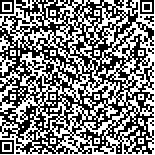裴松,夏家怡.视觉反馈太极“云手”训练对亚急性期脑卒中患者平衡功能的影响[J].中华物理医学与康复杂志,2023,45(7):614-619
扫码阅读全文

|
| 视觉反馈太极“云手”训练对亚急性期脑卒中患者平衡功能的影响 |
|
| |
| DOI:10.3760/cma.j.issn.0254-1424.2023.07.007 |
| 中文关键词: 视觉反馈 太极 云手 脑卒中 平衡 |
| 英文关键词: Visual feedback Tai chi Yun shou Stroke Balance |
| 基金项目:2020年上海市卫生健康委员会青年项目(20204Y0369);2023年宝山区医学重点学(专)科建设(BSZK-2023-BP09);上海市宝山区仁和医院中青年优秀人才培养计划资助(BSRHYQ-2021-06) |
|
| 摘要点击次数: 3540 |
| 全文下载次数: 3702 |
| 中文摘要: |
| 目的 观察视觉反馈太极“云手”训练对亚急性期脑卒中患者平衡功能的影响。 方法 采用随机数字表法将56例亚急性期脑卒中后偏瘫患者分为观察组及对照组,每组28例。2组患者均给予常规平衡功能训练,观察组在此基础上辅以视觉反馈太极“云手”训练。于干预前、干预4周后通过Balance诺衡视觉反馈平衡系统对2组患者进行姿势图平衡参数评估,通过microFET2型便携式肌力测试仪对患者下肢肌力进行测试,采用Berg平衡量表(BBS)、计时起立-行走测试(TUGT)、10米步行时间测试(10MWT)、改良Barthel指数量表(MBI)分别评估患者平衡能力、下肢肌力、步行功能及日常生活活动(ADL)能力改善情况。 结果 治疗后观察组患者BBS、TUGT、10MWT及MBI评分均较治疗前明显改善(P<0.05),对照组仅有TUGT及MBI评分较治疗前明显改善(P<0.05),并且观察组BBS、10MWT及MBI评分亦显著优于对照组(P<0.05)。治疗后观察组偏瘫侧股四头肌(QUA)、胫前肌(TA)、腓肠肌(GAS)肌力均较治疗前明显增强(P<0.05),对照组偏瘫侧QUA、健侧腘绳肌(HAM)及GAS肌力亦较治疗前明显增强(P<0.05),并且观察组偏瘫侧QUA肌力改善幅度显著优于对照组(P<0.05)。治疗后观察组患者重心移动轨迹总长度(PL)、覆盖面积(CA)均较治疗前明显减少(P<0.05),对照组仅有CA较治疗前明显减小(P<0.05),并且观察组PL亦较对照组明显减少(P<0.05)。 结论 视觉反馈太极“云手”训练对亚急性期脑卒中患者平衡功能恢复具有促进作用,该疗法值得临床推广、应用。 |
| 英文摘要: |
| Objective To observe any effect of Yun shou tai chi training with visual feedback on the balance of persons who have survived a stroke. Methods Fifty-six stroke survivors were randomly divided into an observation group and a control group, each of 28. Both groups were given routine balance function training, while the observation group was additionally given Yun shou tai chi training with visual feedback. Before and after the four weeks of training, the subjects′ balance and posture were evaluated using a Nomex visual feedback balance system. Lower limb strength was evaluated with a microFET2 portable muscle strength tester. The Berg Balance Scale (BBS), Timed Up and Go Test (TUGT), 10-metre walk times (10MWTs) and the modified Barthel Index (MBI) were also applied. Results After the training the average BBS, TUGT, 10MWT and MBI results of the observation group had improved significantly. Among the control group only TUGT times and MBI scores had improved significantly, but even then the average MBI score of the observation group was significantly higher. The training improved the strength of the trainees′ quadriceps femoris (QUA), tibialis anterior (TA) and gastrocnemius (GAS) on the hemiplegic side. Their hamstrings and GAS on the non-hemiplegic side were also significantly stronger, on average. The improvement in the QUA of the hemiplegic side in the observation group was significantly better than the control group′s average improvement. The path length (PL) and the covered area (CA) in the observation group had decreased significantly after the training, while among the controls only the CA had decreased significantly. The average PL in the observation group was therefore significantly shorter than in the control group. Conclusion Yun shou tai chi training with visual feedback can promote the recovery of balance function after a stroke. Such training is worthy of clinical promotion and application. |
|
查看全文
查看/发表评论 下载PDF阅读器 |
| 关闭 |